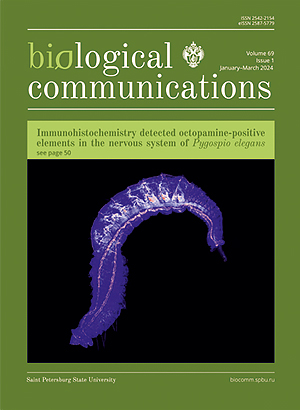Exploring Octopamine: Immunohistochemical research of a spionid worm Pygospio elegans nervous system
DOI:
https://doi.org/10.21638/spbu03.2024.106Abstract
Octopamine is a biogenic amine specific for invertebrates distributed in all groups from Cnidaria to Echinodermata. Our study is aimed to investigate the octopamine-positive elements in the nervous system of the spionid worm Pygospio elegans. Immunohistochemistry was used to detect octopamine-positive elements in the central and peripheral nervous systems. While the central nervous system exhibited weak staining, the peripheral nervous system showed specifically octopamine-like elements in the palps, peristomium, and body segments. The detected octopamine-like elements were compared with other neurotransmitters in the P. elegans nervous system. Our results contribute to the data on annelid octopaminergic nervous system structure.
Keywords:
Pygospio elegans, nervous system, peripheral nervous system, octopamine, immunohistochemistry, confocal microscopy
Downloads
References
Downloads
Published
How to Cite
License
Articles of Biological Communications are open access distributed under the terms of the License Agreement with Saint Petersburg State University, which permits to the authors unrestricted distribution and self-archiving free of charge.





